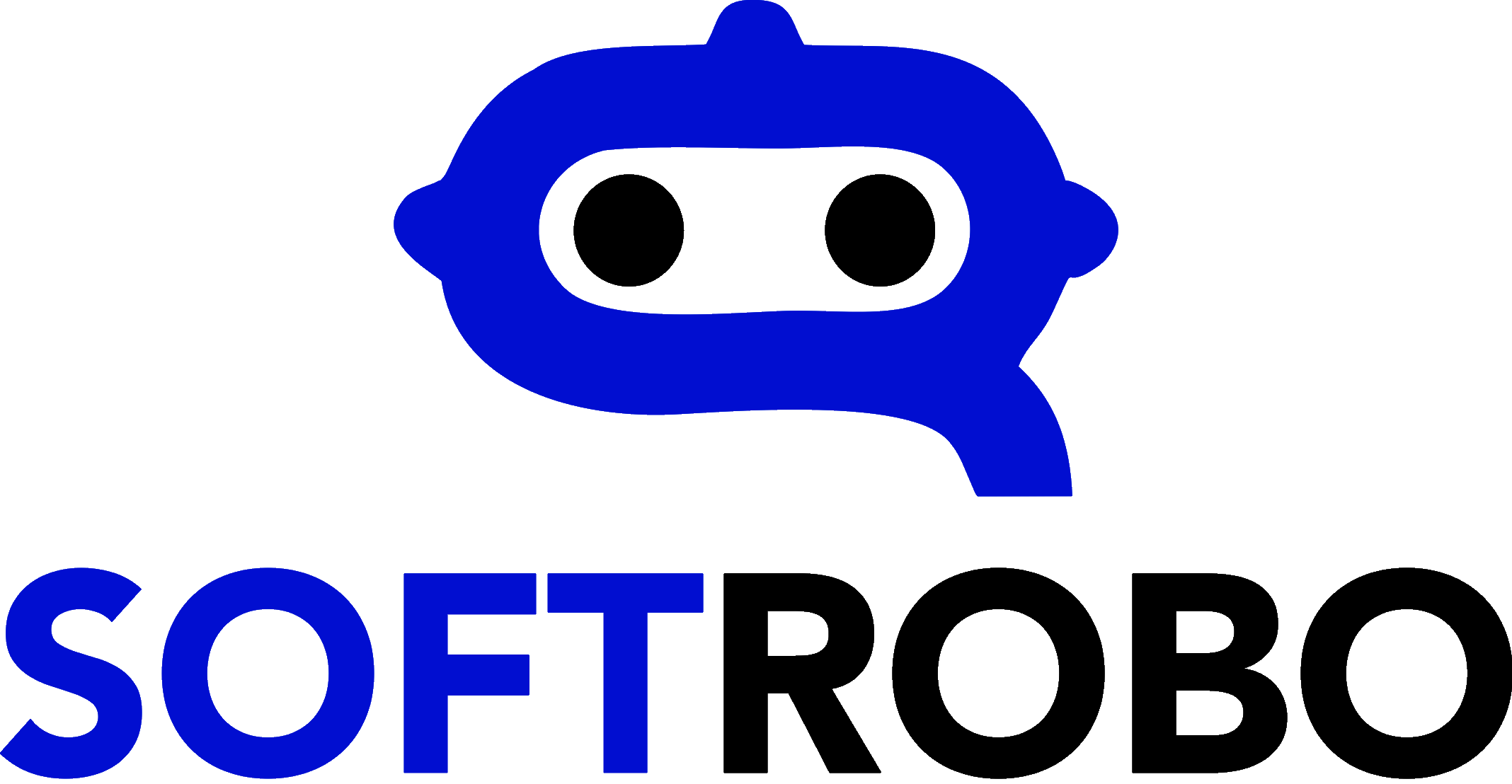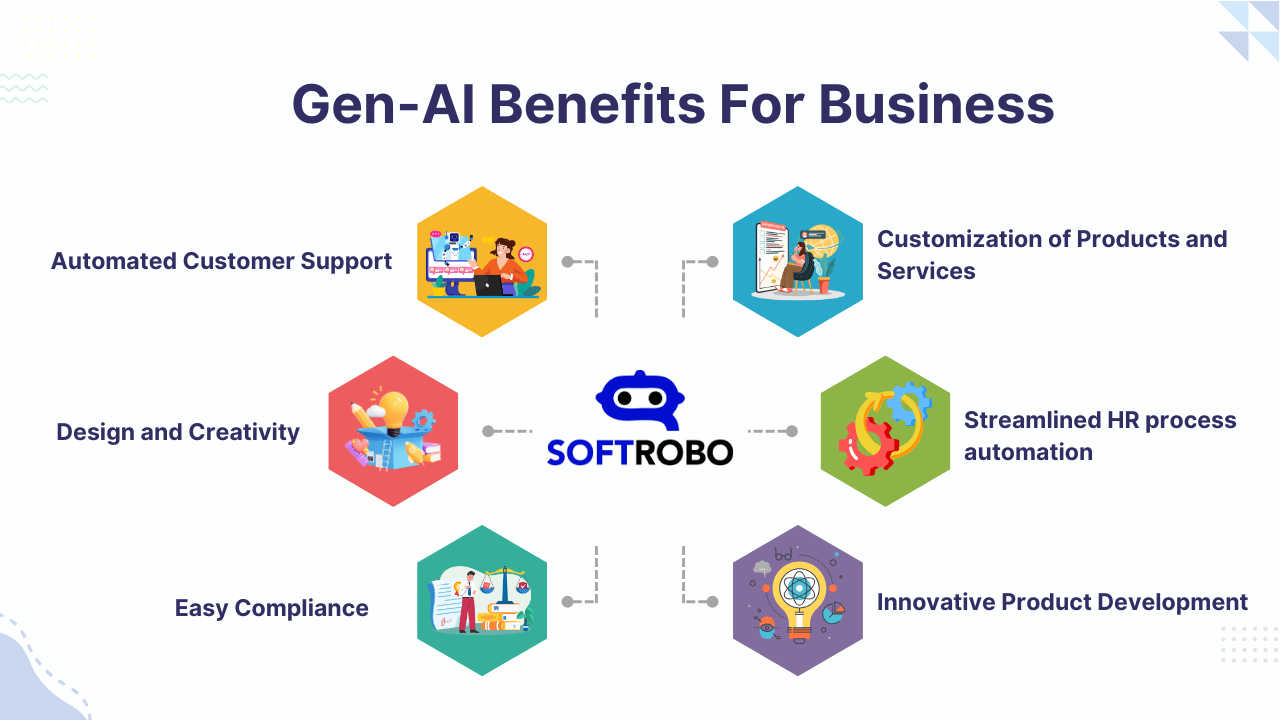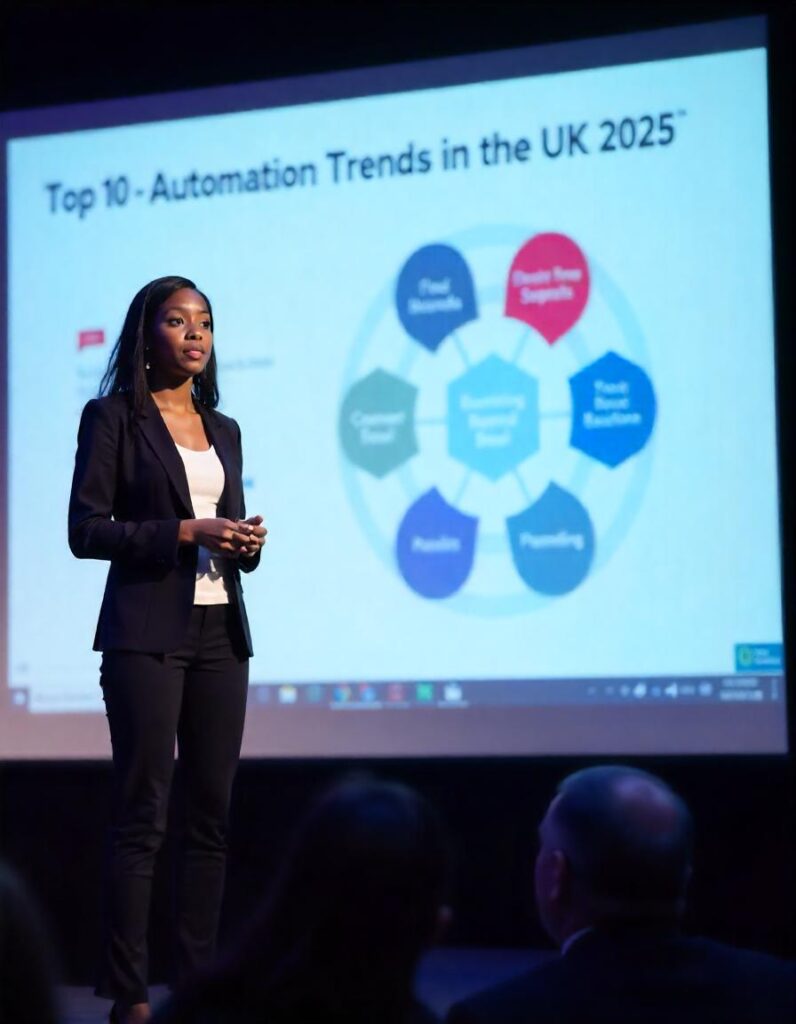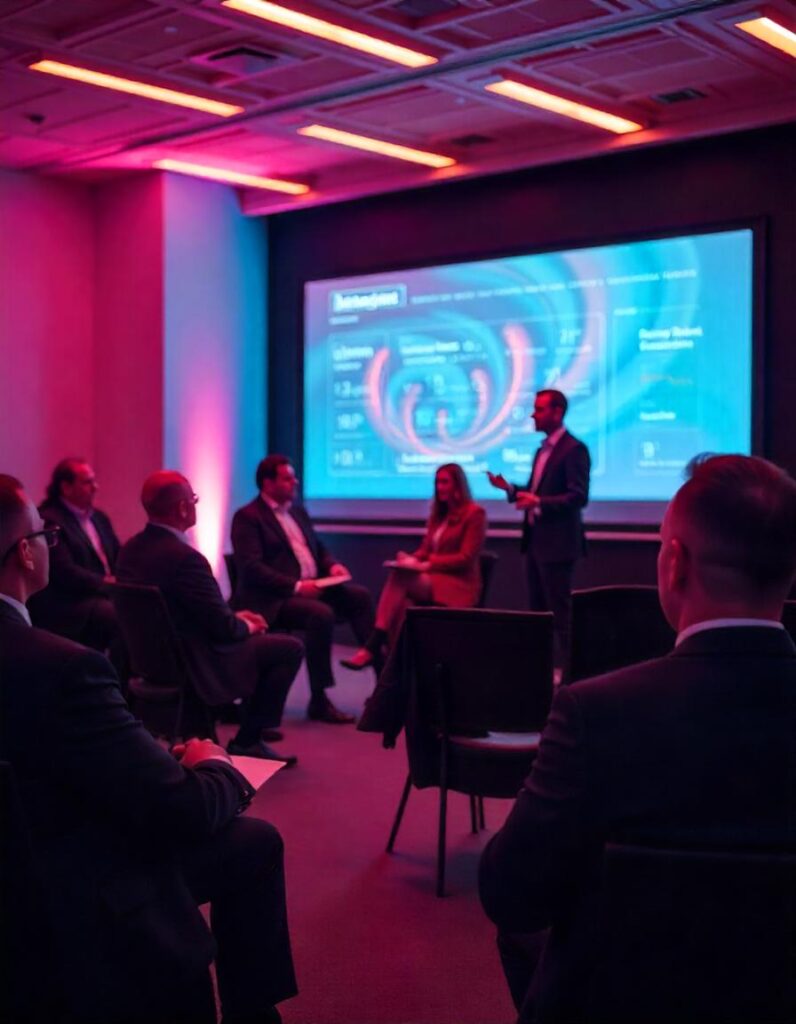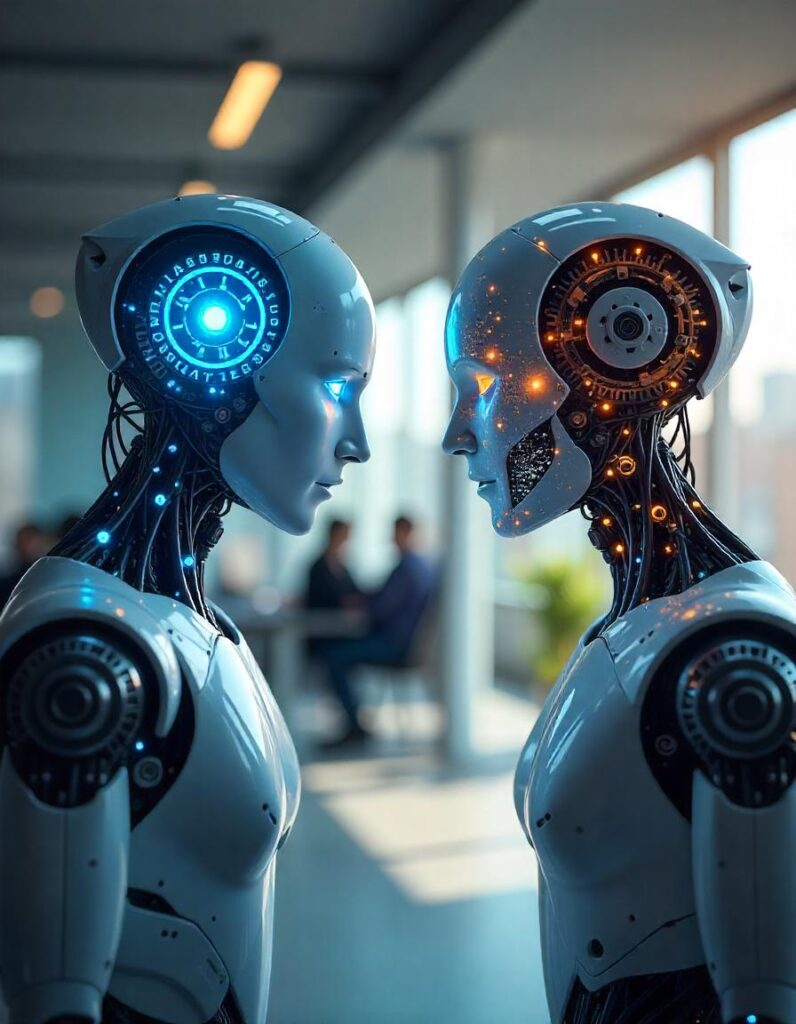Artificial Intelligence is making progress by leaps and bounds. AI tech like smartphones, automated driving systems, and chatbots are escaping our imagination and making our lives easier.
Most businesses consider generative AI to be their next frontier of productivity, as it can perform many tasks.
Generative AI has changed the way that businesses create, innovate, and interact. A McKinsey study shows that AI adoption has doubled over the past five years. The application of generative AI has a wide-ranging impact.
Let’s learn what generative artificial intelligence is and why it matters to business owners.
What is Generative AI?
The generative AI system is an artificial intelligence that can generate a variety of informational content including text, images, audio, etc.
Recent buzz about generative AI has been attributed to its ability to create high-quality content within a fractions of a second.
How can Generative AI help your business operations?
As reported in a McKinsey Report, Generative AI can add as much as $2.6 – $4.4 trillion towards productivity growth within the economy. There is hope that the generative AI will be favorable to businesses.
Businesses need to be mindful and think beyond their own capabilities for content creation. It gives it a broader scope of usage for a business to utilize.
Take a look at the ways generative AI could help your business.
1. Automated Customer Support
The use of Generative AI in automating customer service can revolutionize the way businesses approach it. It can change the way businesses interact with customers and improve their overall experience.
One of the most important advantages of generative AI is its ability to develop and deploy intelligent chatbots and virtual assistants who interact live with customers. AI-driven systems can be used around the clock to provide round-the-clock support for customers and respond quickly to all kinds of questions.
AI bots can also understand and interpret a wide range of customer questions, from the most basic to complex. They can provide instant solutions, troubleshoot problems, and guide customers through the process step by step based on data.
Automation of these interactions reduces response time and eases the load on human customer service agents. The agents are freed up to handle more sensitive and complex issues.
It is continuously learning and improving from its interactions with the users. Through natural language processing and machine learning, it becomes more adept at adapting to customer changes and improving responses. Learning capabilities of generative AI can improve the efficiency and accuracy of automated responses.
Consistency in service is important. Each customer interaction should be managed according to company policies and the brand voice. It will ensure a consistent customer experience regardless of volume or time. Any business should strive for consistency, as it builds brand loyalty and trust among customers.
AI-generated lead management can also be a great help. AI, for example, can analyze data on leads and predict conversion probabilities by analyzing their interactions.
Combining AI with human interaction can help businesses improve their customer loyalty and retention.
2. Content Creation
Generative AI uses sophisticated algorithms and machine-learning capabilities to automate production of a variety of textual contents. This is especially useful for industries with high content requirements, such as marketing, publishing and ecommerce.
Generative AI produces content at an unprecedented pace, including blog posts, product descriptions, and articles. This is extremely difficult for human writers. The software can create large quantities of material in just seconds. This ensures that platforms with a demand for quality content are never without it.
This also encourages diversity as the content can be tailored to different audiences and topics.
The generative AI is able to be fine-tuned so that it maintains a consistent voice and style in all content generated, thereby reinforcing the brand identity. Human writers are freed from mundane tasks, and resources can be allocated more efficiently. They can then focus on the more creative and strategic aspects.
The AI can also generate relevant and engaging content to nurture leads, including personalized emails, blogs, social media updates and more. Content can be tailored to the user’s preferences using generative AI.
3. Forecasting data analysis and decision-making
Strategic decisions are part and parcel of businesses. Generative AI helps organizations to make strategic decisions based on the provided valuable insights derived from large datasets. These datasets can be fed or can be tracked directly from the internet.
The main benefit of this technology is its ability to identify patterns in large data sets that are hard for human beings to detect.
The software analyzes past data to accurately predict the future. This software is particularly useful for industries like marketing, finance and supply chain management that need precise forecasting.
By making accurate predictions, generative AI can improve resource allocations and marketing campaigns. Data is heavily used to inform decisions. This allows business leaders to make data-driven decisions instead of making subjective judgements and relying solely on intuition.
The Generative Artificial Intelligence excels in analyzing different scenarios. This allows businesses to simulate various decisions under different conditions. Analysis helps in strategic planning by providing an understanding of possible outcomes. It also prepares organizations for various contingencies.
AI can provide valuable insight and address a broader range of contexts. However, the human element is still crucial in framing and interpreting questions and insights as well as evaluating a larger picture. Businesses can improve their decisions by combining AI with intuition.
The synergy of human expertise and data-driven forecasts enhances strategic decisions and improves business performance in highly competitive environments.
4. Design and Creativity
With its computational capabilities, Generative AI opens up new possibilities for artistic expression and the design process. Its key contribution is to help artists, designers and creators with brainstorming and ideation. It can produce a multitude of creative and unique ideas based on parameters input and act as inspiration for new projects.
AI creates personalized and complex designs through the analysis of vast datasets. It identifies trends and consumer preferences and then converts them into designs tailored to specific audiences. Customization increases customer satisfaction and engagement by creating products and visuals that are tailored to individual tastes.
AI-generated components also foster collaboration between humans and machines. Designers incorporate AI-generated elements into their works, improving or enhancing according to their artistic vision. The synergy of AI with human creativity creates innovative hybrid designs.
The potential of generative AI is most evident in fields such as architecture, fashion and graphic design. It allows for the creation of complex patterns, blueprints and fashion concepts which push conventional boundaries. AI can create ideas and designs. However, human input is still required to refine and select the most suitable concepts.
5. Easy Compliance
Generative AI ensures that businesses can meet compliance requirements efficiently and effectively. One of its main contributions is the automated generation of documents and reports that adhere to regulatory frameworks.
The generated content is meticulously crafted by AI to include all the elements and information necessary for compliance. It reduces the chance of human error, and ensures documents adhere to prescribed formats and guidelines. Businesses can now navigate complex compliance landscapes more precisely and with reduced operational risk.
The generative AI also accelerates compliance by producing materials quickly. It is especially useful for industries like finance and healthcare that are subject to complex and changing regulations. This allows businesses to quickly adapt to changes in compliance requirements. They can stay up to date and avoid penalties.
It also supports internal consistency, by creating materials that are consistent in their approach to compliance for different departments and functions. This consistency improves communication, collaboration and alignment in the organization. It minimizes discrepancies, and ensures that everyone is on one page.
It’s also important to remember that, while generative AI can streamline compliance efforts, humans are still required to oversee the process. Legal and compliance experts play an important role in defining rules and parameters to AI-generated content. This ensures that the content accurately reflects regulations and guidelines. It helps businesses to navigate regulatory challenges with greater confidence and effectiveness.
6. Coding
The AI generated by Generative AI analyzes existing codebases to generate code snippets tailored to specific needs. Developers can speed up their workflow by receiving suggestions, templates or entire sections of code aligned with project needs. These code segments are optimized and can follow best practices.
Generative AI can also improve development efficiency by automating some aspects of code generation. AI can handle repetitive coding tasks, allowing developers to focus on more complex architectures and solving problems.
AI-powered coders are also able to minimize human error. The generated code will be less likely to contain syntax and logic errors. This reduces bugs in the final product.
AI can also adapt the generated code to the specific needs of the business, while taking into consideration the context and requirements for the project. Customization can result in more effective and tailored solutions. It can be used for code review and quality control. AI tools help developers identify problems earlier in the development cycle by analyzing code to find potential bugs or vulnerabilities. This saves time and resources.
Over time, AI-generated code can learn patterns from existing codebases to improve its ability. This iterative process of learning can lead to a more sophisticated and advanced code generation.
7. Customization of Products and Services
Generative allows companies to customize their offerings based on the preferences and needs unique to each customer using advanced algorithms and data analytics. Its key benefit is the ability to analyze vast amounts of data about customers, such as their purchase history, preferences and behavior.
AI-driven customization that is based on generative AI enhances customer satisfaction by offering options that are tailored to individual preferences. Businesses can offer bespoke solutions to customers that are tailored to their needs, whether it is in the e-commerce space, product design or service offerings. This will increase engagement and satisfaction.
A generative AI also allows for adaptation in real time. Businesses can continually refine and adapt their offerings by analyzing feedback and customer interactions. This agility encourages customer loyalty, and maintains long-term relationships.
The AI that is generated by businesses can also help them create unique products and services. It can, for example, generate multiple versions of a particular product depending on the input criteria. This allows customers to select from a variety of customized options.
It’s important to strike the right balance between human and automation touch. Human intervention is necessary to ensure the final customization matches customer expectations and brand image.
8. Streamlined HR process automation
The use of AI-based processes can transform HR tasks from inefficient and error-prone to efficient and error free, allowing HR professionals to concentrate on strategic initiatives.
Automating repetitive and time-consuming tasks such as resume screening and candidate matching can be achieved with the help of these systems. These systems analyze resumes and job applications to identify the key skills and qualifications that match job requirements. The recruitment process is accelerated by quickly shortlisting the candidates that are best suited for the role. This allows HR teams to focus more time on evaluating the best candidates.
Additionally, generative AI can automate internal communication within an organization. It can create employee onboarding materials, training material, and announcements to ensure that accurate and consistent information is distributed across the company.
The use of generative AI can also improve the efficiency of processes for evaluating performance. It can help analyze employee performance data and identify patterns and trends that are not immediately obvious. This data-driven method allows HR professionals to make better decisions regarding employee growth and development.
Moreover, generative AI promotes greater accuracy in the HR operations. Automating tasks such as payroll processing and attendance monitoring reduces the possibility of human error. This ensures that employees are paid correctly and administrative tasks handled smoothly.
It’s important to find a balance between automation, and human interaction. Although generative AI can streamline processes, humans are still needed for tasks involving empathy, nuanced decisions, and interpersonal interaction.
9. Innovative Product Development
The use of Generative Artificial Intelligence can be a game changer for businesses, as it can improve their innovative product development process. It can redefine the boundaries for creativity and open up new ideas and avenues of design and ideation that nobody had ever thought about. When businesses get help with brainstorming and conceptualizing new product concepts, idea generation can seem easier.
Generative AI can produce a variety of innovative ideas based on market trends, customer preferences and existing product data. AI technology, by accelerating product development in the early stages, can inspire and encourage companies to explore new and innovative possibilities.
AI generative also helps in rapid prototyping. Based on input criteria, it can create 3D models and visual concepts. It can even generate virtual prototypes. It can be used to improve visualization, and allow businesses to quickly iterate designs.
Moreover, generative AI supports iterative design processes. It allows designers to explore different design options and experiment with various parameters.
The use of Generative AI encourages collaboration across disciplines. It can help designers, engineers and other teams to co-create innovative products.
It’s also important to remember that, while generative AI can enhance innovation, the human touch is still vital. Human designers and engineers have artistic sensibilities, domain expertise, and critical thought that help AI-generated ideas to align with brand identity and user needs.
Final Thoughts
Integrating generative AI in your business operations can usher in an era of increased efficiency, creativity and strategic decision making. With its ability automate tasks and personalize experiences and generate innovative solutions generative AI is able to reshape how your organization works and interacts with clients.
As with any new technology, you must approach its adoption carefully. To maximize the potential of generative AI, you must balance the benefits of the technology with the ethical concerns, data security and human oversight.
By adapting this technology and planning strategically, you can use it to boost growth, improve customer satisfaction and remain competitive in an ever-changing landscape.
